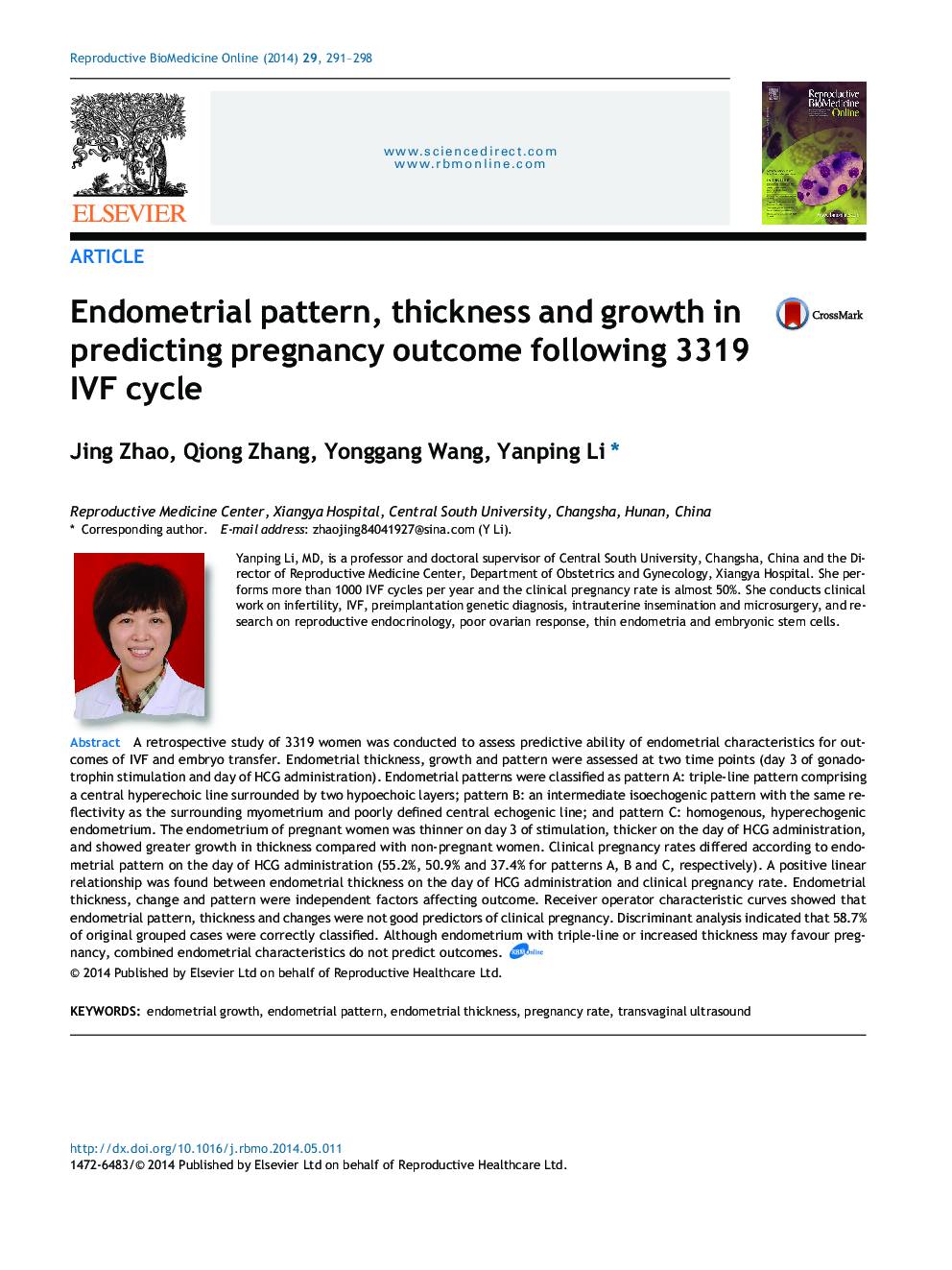| Article ID | Journal | Published Year | Pages | File Type |
|---|---|---|---|---|
| 3970118 | Reproductive BioMedicine Online | 2014 | 8 Pages |
A retrospective study of 3319 women was conducted to assess predictive ability of endometrial characteristics for outcomes of IVF and embryo transfer. Endometrial thickness, growth and pattern were assessed at two time points (day 3 of gonadotrophin stimulation and day of HCG administration). Endometrial patterns were classified as pattern A: triple-line pattern comprising a central hyperechoic line surrounded by two hypoechoic layers; pattern B: an intermediate isoechogenic pattern with the same reflectivity as the surrounding myometrium and poorly defined central echogenic line; and pattern C: homogenous, hyperechogenic endometrium. The endometrium of pregnant women was thinner on day 3 of stimulation, thicker on the day of HCG administration, and showed greater growth in thickness compared with non-pregnant women. Clinical pregnancy rates differed according to endometrial pattern on the day of HCG administration (55.2%, 50.9% and 37.4% for patterns A, B and C, respectively). A positive linear relationship was found between endometrial thickness on the day of HCG administration and clinical pregnancy rate. Endometrial thickness, change and pattern were independent factors affecting outcome. Receiver operator characteristic curves showed that endometrial pattern, thickness and changes were not good predictors of clinical pregnancy. Discriminant analysis indicated that 58.7% of original grouped cases were correctly classified. Although endometrium with triple-line or increased thickness may favour pregnancy, combined endometrial characteristics do not predict outcomes.
